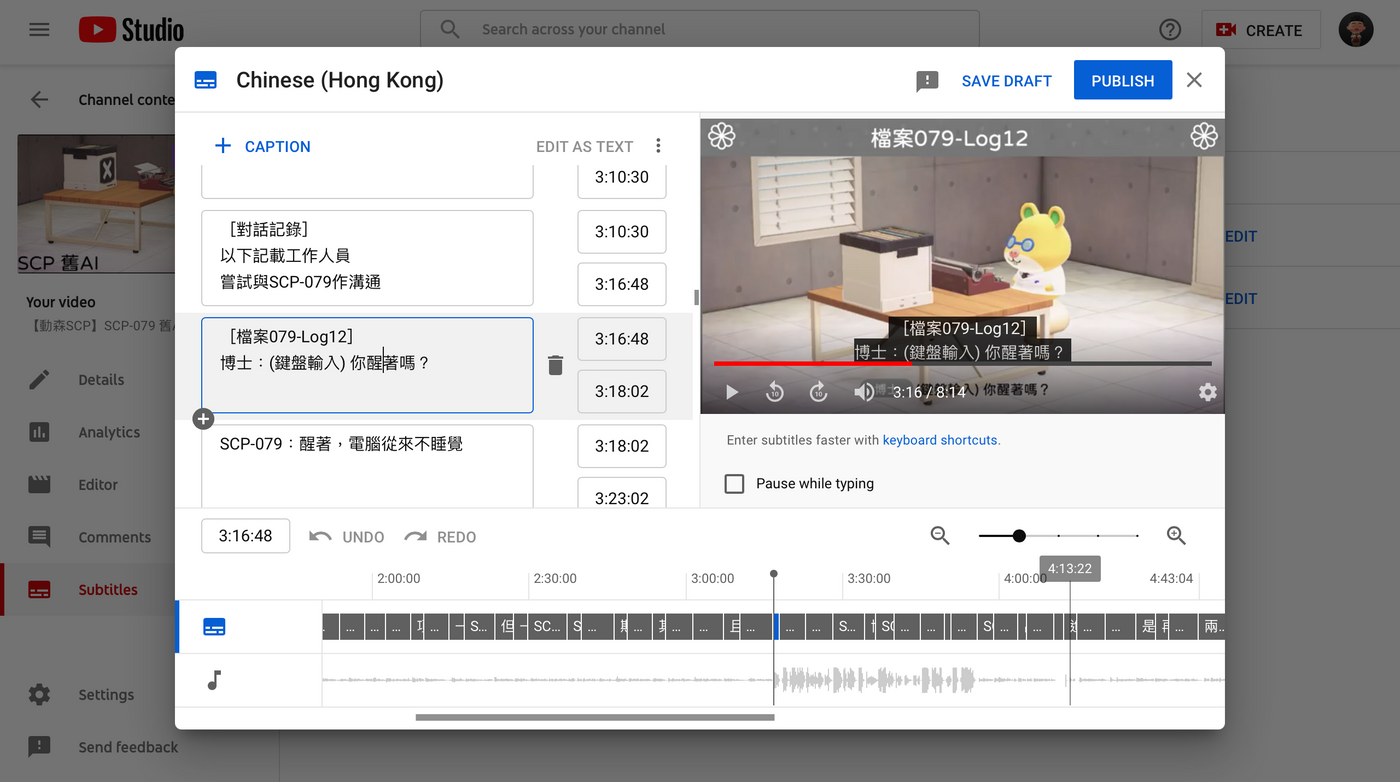Production and use of subtitles

Recently, I added CC subtitles to some of my Dongsen micro-movies on YouTube so that the audience can open them as needed. Discovering subtitles is also a way to add points to the video~ YT provides English and Japanese automatic subtitle transcription, but Chinese Cantonese or Mandarin is not supported in 2021.
YT defaults to enable CC subtitles, and in the background, you can also know that the audience uses subtitles in that language for reference. Some viewers who choose CC subtitles may be watching in a noisy commute environment (delete: or simply don't want to hear my voice).
The video itself has embedded subtitles, and the embedded subtitles can be added with some display effects, and they will definitely be displayed. With these external CC subtitles, the original intention is to increase the audience. Written in Chinese so that non-Cantonese audiences or those who can understand English can also appreciate it.
And CC subtitles can also be used as part of SEO, allowing YouTube to analyze the subtitles I provide and find keywords to push to more relevant/potentially interested new viewers.
Sometimes the content is wrong, but unlike articles, videos can be revised. Therefore, through the subtitles, the corrections can be marked for the audience to know.
Refer to a super-detailed BBC Subtitle Guidelines , which lists a lot of things to pay attention to or ways to improve the readability of subtitles. A bit like the APA regulations to refer to when writing a thesis, here are some suggestions that I think are more commonly used
- Try to subtitle word by word without shortening the words for the deaf/lip-reading audience
- A line of up to 37 English characters or up to three lines (or up to about 70% of the screen width/safe display area)
- Different period for each sentence
- Break sentences logically (mostly nouns, conjunctions), depending on the context, sometimes one long line is better than two short lines
- (softly spoken words), STRESS, sarcasm with (!) at the end, rhetorical question (?), slash if it's a call/radio, ellipsis for the interrupted part
- Extend the subtitle time if the screen has too much information displayed/multiple speakers/unintelligible words
- Try to be in sync with the actual dialogue, no spoilers/hints to what's next
- Mark out special sound effects, such as "gunshots" and "lion cries" for example
- Add ♫ at the beginning of each sentence if you want to express a longer piece of music (eg "romantic music")
- # lyrics# , if the lyrics are relevant to the content
- Express multiple speakers with a dash "-" or by directly specifying the person's name ("Xiao Ming: words")
- 1–10 are expressed as one to ten, others are written back to the original number
Subtitles are in the simplest SRT format. The open format VTT is being considered recently. Sometimes subtitles will block the screen, if you use VTT you can specify the position of individual lines on the screen.
While subtitles add one more (very) time-consuming process, why not do it if you can add one more subscriber?
more references
Like my work? Don't forget to support and clap, let me know that you are with me on the road of creation. Keep this enthusiasm together!

- Author
- More